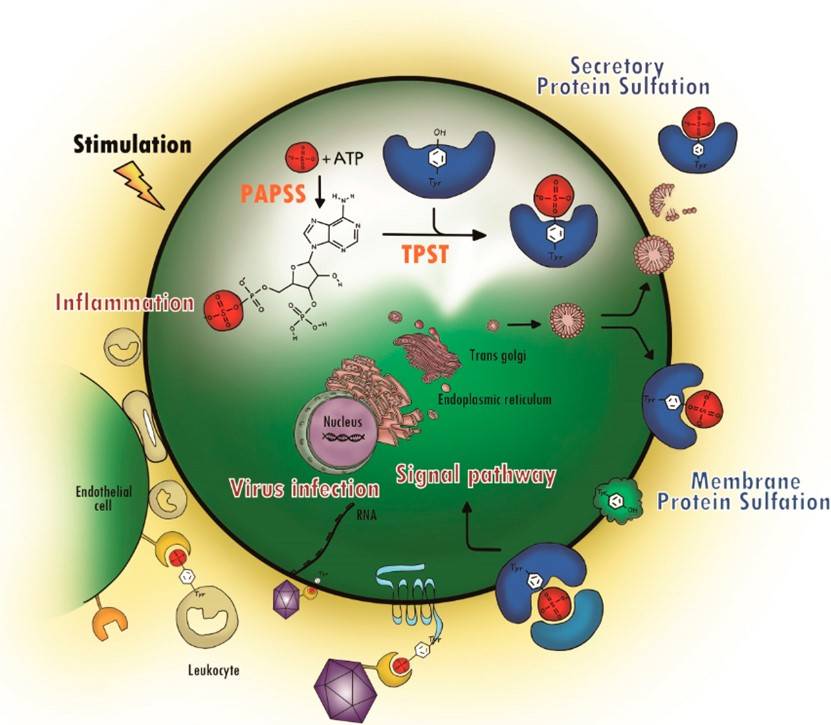Sulfate Modification Service
With extensive experience and Ph.D. level specialists in sulfate modification, Creative Biolabs provides the most comprehensive carbohydrate sulfate modification services for global researchers. Our experienced scientists will work closely with you and give the best solution to help you overcome any problem during the research.
Introduction of Sulfate Modification
Sulfation refers to the biochemical process by which an inorganic sulfate forms a biologically active organic sulfate under the catalysis of an enzyme. Elemental sulfur in the form of inorganic sulfates can only be bioavailable after metabolic activation. The family of sulfuric acid transferases is responsible for the transfer of activated sulfate groups from 3'-phosphate glands 3'-phosphoadenosine-5'-phosphosulfate (PAPS) to various biomolecules such as hormones, neurotransmitters, carbohydrates, and protein tyrosine. Besides, 5'-adenosine-5' phosphosulfate (APS) and PAPS are also used to synthesize reducing sulfur metabolites, such as the components of many proteins - methionine and cysteine.
 Fig.1 Protein tyrosine sulfation (PTS) and its biological pathways.1
Fig.1 Protein tyrosine sulfation (PTS) and its biological pathways.1
Sulfated Modification of Polysaccharides
The sulfation of polysaccharides is one of the most studied methods in the chemical modification of polysaccharides. The principle is to add sulfate groups to the glycosyl groups of polysaccharides to change the structure of polysaccharides to increase their biological activity. It showed that sulfated polysaccharides could increase the phagocytosis of macrophages, promote macrophages to secrete NO, IL-6, and other interleukins, enhance immunomodulatory capacity. Nagasawa method, Wolfrom method (chlorosulfonic acid-pyridine method), and sulfur trioxide-pyridine method are common methods for sulfating polysaccharides. Different methods are used for different types of polysaccharides. Furan-type polysaccharides are commonly used by the Nagasawa method, while pyran-type polysaccharides are often used by Wolfrom method.
Carbohydrate Sulfate Modification at Creative Biolabs
With years of experience focusing on sulfate modification, our scientists offer a full range of sulfate modification services and are confident in providing high-quality, flexible, and expedient solutions to meet global customers' specific research demands. Besides, the team of experts devoted to glycan studies will also help customers with problems of carbohydrate sulfated. Proficient in various advanced technologies and methods, our scientists have completed lots of relative projects.
Advantages of Our Services
-
Comprehensive technologies and advanced method platforms
-
High-quality experts specialized in the field with years of experience
-
High sensitivity, effective and cost-effective
-
Quality after-sale service
Creative Biolabs is a forward-looking CRO company that has lots of experts specialized in sulfate modification. Our scientists will tailor the most appropriate methods, by which you can always reach the experimental goals as effectively as possible. Please feel free to contact us for more information.
Reference
-
Yang, Yuh-Shyong, et al. "Tyrosine sulfation as a protein post-translational modification." Molecules 20.2 (2015): 2138-2164. Distributed under Open Access license CC BY 4.0, without modification.
For Research Use Only.
Related Services

 Fig.1 Protein tyrosine sulfation (PTS) and its biological pathways.1
Fig.1 Protein tyrosine sulfation (PTS) and its biological pathways.1



